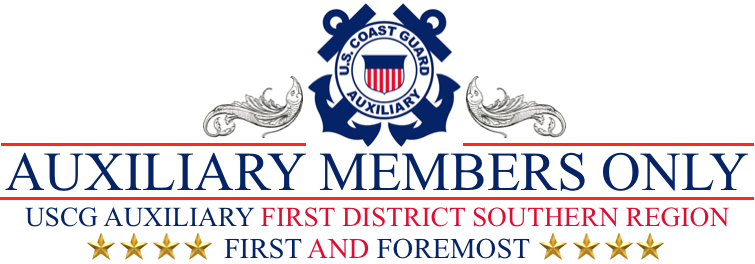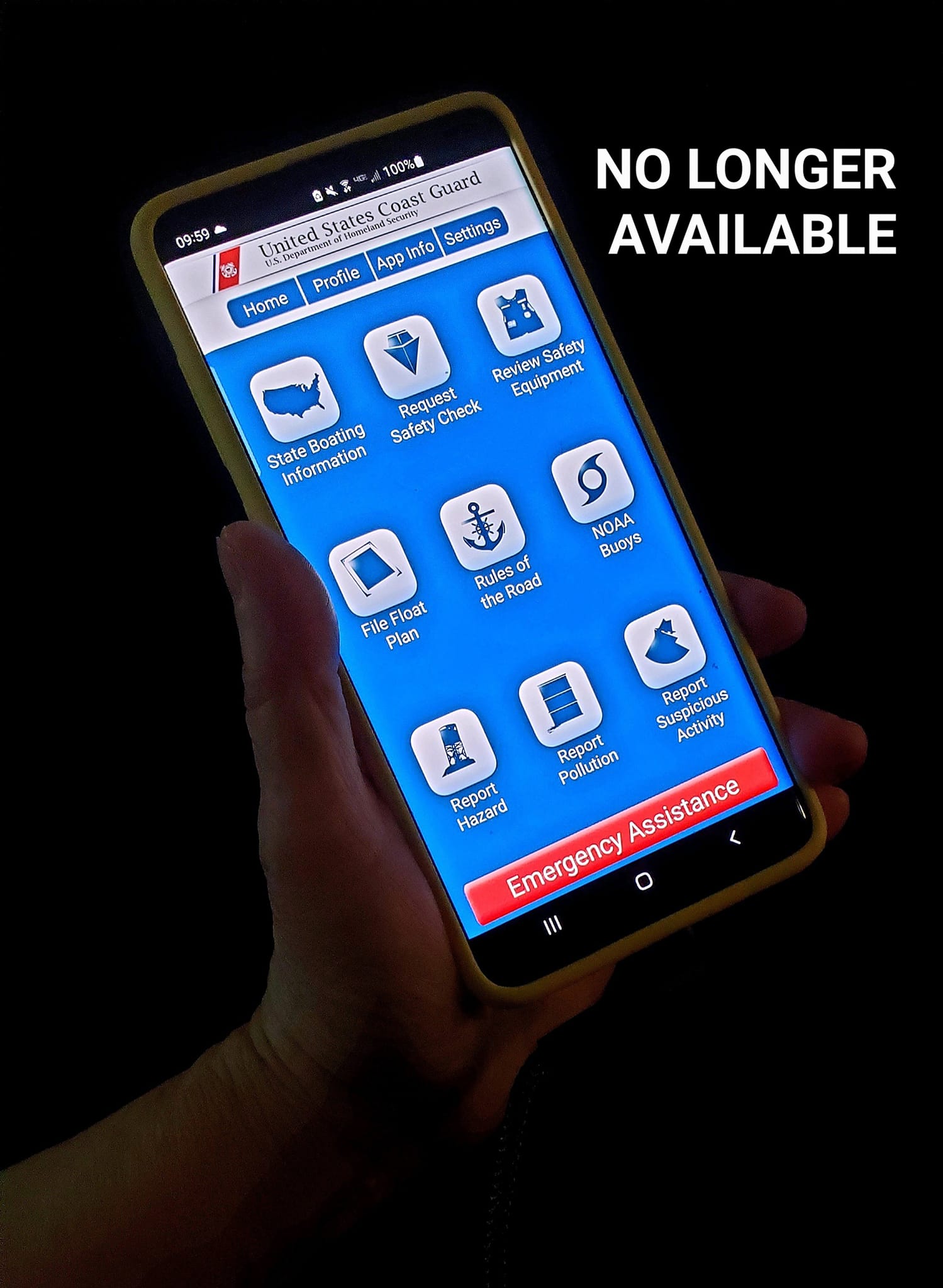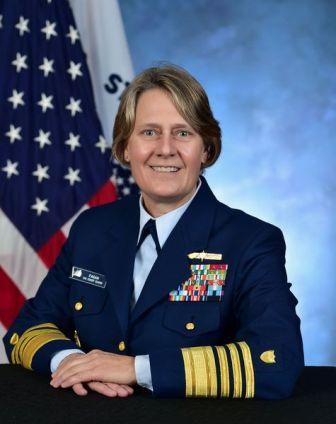Flotilla 4-4 What's New!

20 DEC 2022
FM: CHDIRAUX
TO: ALAUX
ALAUX 048/22
Subj: CALENDAR YEAR (CY) 2023 ANNUAL CURRENCY MAINTENANCE REQUIREMENT TRACKING FOR CREWMEMBER, COXSWAIN, PWC OPERATOR, AND NIGHTTIME CERTIFICATION
A. Auxiliary Training Handbook – Boat Crew, ATH 16794.51A
B. Auxiliary Qualification Handbook – Boat Crewmember, Coxswain, PWC Operator, ATH 16794.52A
1. This ALAUX announces requirements for nighttime certification and procedures for tracking annual currency maintenance task for CY 2023.
2. Starting 01 January 2023, all crewmembers and coxswains who have attained certification prior to 31 December 2022 and not placed in Required Yearly Requirement (REYR) status for CY 2022, will show as “Night Certified” in AUXDATA II.
3. Any crewmember or coxswain obtaining certification for the first time after 01 January 2023, must follow the policy in reference (B) if they would like to obtain nighttime certification. The man-overboard and navigation and piloting exercise of the member's qualification check ride must be performed at night in accordance with reference (A) and reference (B). All other tasks may be performed, at night, at the discretion of the Qualification Examiner. Members in REYR status must follow reference (A) if they would like to obtain nighttime certification. Recommendation of night certification by the Qualification Examiner must be in accordance with Chapter 6 of reference (A) for submission to the District Operation Training Officer.
4. The enclosures listed below must be used for tracking and reporting annual currency maintenance task and underway nighttime hours required by reference (A):
• Annual Currency Maintenance Task Tracker, Crewmember (Enclosure 4)
• Annual Currency Maintenance Task Tracker, Coxswain (Enclosure 5)
• Annual Currency Maintenance Task Tracker, PWC Operator (Enclosure 6)
5. These enclosures can be found at USCGAUX: Boat Force Forms & Documents and will be included in the next revision to reference (A).
6. The definition of the “terms” Qualification, Certification, and Currency Maintenance can be found in reference (A).
7. This ALAUX will be cancelled on 31 December 2023.
8. Internet release is authorized.
![]()

![]()
Admiral Linda Fagan nominated to lead U.S. Coast Guard. This would be the first female in history to lead a Military Service! Very exciting news!
Adm. Fagan has selected, and the president has nominated, Vice Adm. Steven Poulin, Atlantic Area Commander, as the Coast Guard's 33rd Vice Commandant of the USCG

![]()
Flotilla Elections will be held on November 18, 2021
Anyone wishing to run for the elected office of Flotilla Commander or Flotilla Vice Commander for 2022 must submit, in writing, a letter of intent to the screening committee on or before November 1, 2021
Screening Committee Members are:
Mike Rebeck
George Reilly
Jim Crincoli
Election Eligibility 2021 List
XXX
|
|
|
U.S. Coast Guard Announces New Law Requiring Use of Engine Cut-off Switches
WASHINGTON - Operators of recreational vessels less than 26 feet in length will be required to use an engine cut-off switch (ECOS) and associated ECOS link (ECOSL) as of April 1, 2021, as the U.S. Coast Guard implements a law passed by Congress.
The ECOS and ECOSL prevent runaway vessels and the threats they pose. The ECOSL attaches the vessel operator to a switch that shuts off the engine if the operator is displaced from the helm. The ECOSL is usually a lanyard-style cord that attaches to an ECOS either in close proximity to the helm or on the outboard motor itself if the vessel is operated by a tiller. When enough tension is applied, the ECOSL disengages from the ECOS and the motor is automatically shut down. Wireless ECOS have recently been developed and are also approved for use. These devices use an electronic “fob” that is carried by the operator and senses when it is submerged in water, activating the ECOS and turning the engine off. Wireless devices are available on the aftermarket and are beginning to become available as manufacturer-installed options.
Each year the Coast Guard receives reports of recreational vessel operators who fall or are suddenly and unexpectedly thrown out of their boat. These events have led to injuries and deaths. During these incidents the boat continues to operate with no one in control of the vessel, leaving the operator stranded in the water as the boat continues on course, or the boat begins to circle the person in the water eventually striking them, often with the propeller. These dangerous runaway vessel situations put the ejected operator, other users of the waterway, and marine law enforcement officers and other first responders in serious danger.
Section 503 of the Coast Guard Authorization Act of 2018 required manufacturers of covered recreational boats (less than 26 feet in length, with an engine capable of 115 lbs. of static thrust) to equip the vessel with an ECOS installed as of December 2019. Owners of recreational vessels produced after December 2019 are required to maintain the ECOS on their vessel in a serviceable condition. It is recommended that recreational vessel owners regularly check their existing ECOS system to ensure it works, following manufacturer’s instructions.
Section 8316 of the National Defense Authorization Act of 2021 requires individuals operating covered recreational vessels (less than 26 feet in length, with an engine capable of 115 lbs. of static thrust; 3 HP or more) to use ECOS “links.” Using the ECOSL is required only when the primary helm is not within an enclosed cabin, and when the boat is operating on plane or above displacement speed. Common situations where ECOSL use would not be required include docking/trailering, trolling and operating in no-wake zones.
The Coast Guard believes that the overwhelming majority of recreational vessels produced for decades have had an ECOS installed, so this new use requirement simply obligates recreational vessel operators to use critical safety equipment already present on their boat.
Seven states currently have ECOS use laws for traditional recreational vessels, and 44 states have ECOS use laws for personal watercraft (PWC).
Boaters are encouraged to check the U.S. Coast Guard website for additional information on this new use requirement and other safety regulations and recommendations: https://uscgboating.org/recreational-boaters/Engine-Cut-Off-Switch-FAQ.php
-USCG-